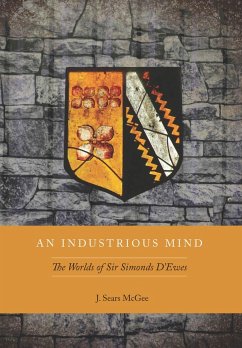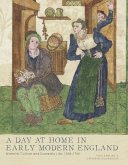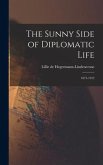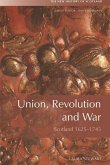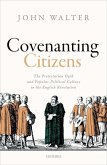- Gebundenes Buch
- Merkliste
- Auf die Merkliste
- Bewerten Bewerten
- Teilen
- Produkt teilen
- Produkterinnerung
- Produkterinnerung
J. Sears McGee is Professor of History at the University of California at Santa Barbara.
Andere Kunden interessierten sich auch für
![Mind Your Manors: Tried-And-True British Household Cleaning Tips Mind Your Manors: Tried-And-True British Household Cleaning Tips]() Lucy LethbridgeMind Your Manors: Tried-And-True British Household Cleaning Tips21,99 €
Lucy LethbridgeMind Your Manors: Tried-And-True British Household Cleaning Tips21,99 €![Japan in the Victorian Mind Japan in the Victorian Mind]() Toshio YokoyamaJapan in the Victorian Mind191,99 €
Toshio YokoyamaJapan in the Victorian Mind191,99 €![Geschichte/History Geschichte/History]() Geschichte/History144,95 €
Geschichte/History144,95 €![A Day at Home in Early Modern England A Day at Home in Early Modern England]() Tara HamlingA Day at Home in Early Modern England82,99 €
Tara HamlingA Day at Home in Early Modern England82,99 €![The Sunny Side of Diplomatic Life: 1875-1912 The Sunny Side of Diplomatic Life: 1875-1912]() Lillie de Hegermann-LindencroneThe Sunny Side of Diplomatic Life: 1875-191237,99 €
Lillie de Hegermann-LindencroneThe Sunny Side of Diplomatic Life: 1875-191237,99 €![Union and Revolution Union and Revolution]() Laura StewartUnion and Revolution143,99 €
Laura StewartUnion and Revolution143,99 €![Covenanting Citizens Covenanting Citizens]() John WalterCovenanting Citizens162,99 €
John WalterCovenanting Citizens162,99 €-
-
-
J. Sears McGee is Professor of History at the University of California at Santa Barbara.
Hinweis: Dieser Artikel kann nur an eine deutsche Lieferadresse ausgeliefert werden.
Hinweis: Dieser Artikel kann nur an eine deutsche Lieferadresse ausgeliefert werden.
Produktdetails
- Produktdetails
- Verlag: Stanford University Press
- Seitenzahl: 536
- Erscheinungstermin: 18. März 2015
- Englisch
- Abmessung: 254mm x 178mm x 33mm
- Gewicht: 1080g
- ISBN-13: 9780804785464
- ISBN-10: 0804785465
- Artikelnr.: 41753516
- Herstellerkennzeichnung
- Libri GmbH
- Europaallee 1
- 36244 Bad Hersfeld
- gpsr@libri.de
- Verlag: Stanford University Press
- Seitenzahl: 536
- Erscheinungstermin: 18. März 2015
- Englisch
- Abmessung: 254mm x 178mm x 33mm
- Gewicht: 1080g
- ISBN-13: 9780804785464
- ISBN-10: 0804785465
- Artikelnr.: 41753516
- Herstellerkennzeichnung
- Libri GmbH
- Europaallee 1
- 36244 Bad Hersfeld
- gpsr@libri.de
J. Sears McGee is Professor of History at the University of California at Santa Barbara.
Contents and Abstracts
0Introduction: "An industrious mind"
chapter abstract
This introduction offers an exploration for the surprising neglect (except
for the autobiography and Long Parliament journal) of the massive D'Ewes
archive. It then offers four reasons for why this neglect should end: the
size and important contents of the collection for a broad array of
subjects; D'Ewes's significance as a consumer of news and conveyer of it to
others; the highly unusual quantity and quality of information about his
upbringing, education, and family life; D'Ewes's role in the Long
Parliament which was based on his deep political and theological beliefs
and commitments.
1"A rationall hearer" - 1602-1620
chapter abstract
Chapter 1 describes D'Ewes's birth, childhood and education from its
beginnings through his two years at St. John's College, Cambridge
(1618-20). It is based largely on the autobiography he wrote between 1636
and 1638 along with letters he wrote to his parents as a schoolboy. From
his adult point of view, the story was about what seemed to him his erratic
and episodic progress toward the Puritan piety that preoccupied him until
it reached what seemed to him its completion in the 1620s. High points
include his agonized despair as he watched his beloved mother die in 1618;
his enjoyment of his studies at Cambridge; and his mixed feelings about his
father's order to leave Cambridge in order to take up study of the common
law at the Middle Temple in London.
2"The whole time & minde are filled with law" - 1620-1626
chapter abstract
From 1620 until late in 1626, D'Ewes spent most of his time as a student of
the common law at the Middle Temple, one of the four Inns of Court that
provided legal education. His initially reluctant and ultimately successful
immersion in the law is one of five themes into which the chapter is
divided. The second is his fascination with the historical documents he
began to read in the Tower of London and other archives and his decision to
write a history of England based on them. The third is his growing
preoccupation with the news of events at home and abroad, and the fourth is
his continuing spiritual development as he became as much a consumer of
sermons as of news. The fifth is the complicated story of his repeated
attempts to find a bride which finally succeeded with his marriage to Ann
Clopton in 1626.
3"To dippe my pen in teares not inke" - 1626-1631
chapter abstract
D'Ewes's marriage enabled him to turn his energies to his research projects
and draw back from his plan to follow his father into the practice of law.
This chapter begins with the completion of his construction of his Puritan
spirituality and his discovery of the significance of the early history of
Christianity in Britain (and especially the Pelagian heresy) for his
understanding of the great struggle between Protestantism and Roman
Catholicism in his own time. He followed the news of the success of
Habsburg armies in the Thirty Years War with fear and trepidation and
became increasingly alarmed at the rise of an anti-Calvinist (Arminian)
faction of clergymen in the Church of England. He also began building what
would become his huge library of books, manuscripts, and coins, and he
experienced the death of his father Paul in 1631.
4"My dearest, dearest" (1631-1639)
chapter abstract
Although D'Ewes and his wife expected to enjoy life at Stow Hall after Paul
D'Ewes's death, a series of conflicts with Richard Damport, the rector of
Stowlangtoft, produced periods of exile in Lavenham and elsewhere for the
couple and their family in the 1630s. Eight of the ten children Anne bore
died very young, and they agonized over those losses repeatedly. D'Ewes
also saw to the completion of his brother Richard's upbringing and
education and corresponded with him when the young man went on lengthy
journeys on the Continent. D'Ewes continued his research project and
library building. He also completed his journals of the parliaments of
Queen Elizabeth I.
5"The highest stepp of wickednes" (1631-1639)
chapter abstract
This chapter treats the continuing development of D'Ewes's political and
religious ideology and its relation to news from abroad and at home in the
1630s. At home his anger against and fear of the advance of the Laudian
party of churchmen (which he believed was part of plot to restore Roman
Catholicism and overthrow Protestantism) increased, culminating in a
personal attack on him from the pulpit of his parish church at Stowlangtoft
by a minion of Matthew Wren, bishop of Norwich. D'Ewes met with and advised
the young Elector Palatine and corresponded with his exiled mother,
Elizabeth (daughter of James I) and widow of Frederick Elector Palatine.
D'Ewes began writing his autobiography and his interest in the possibility
of emigration to Massachusetts in order to escape the religious persecution
he expected increased. He wrote a treatise against persecution which he
could not publish due to censorship by the Laudians.
6"An Iliad of miseries" (1639-1640)
chapter abstract
In November, 1639, King Charles I appointed D'Ewes as the sheriff of
Suffolk, his first public office and a highly unwelcome one because he was
charged with collecting the hated levy known as "ship money." Stuck with
this task for a year, he spent most of his energy dragging his feet and
attracting the ire of the Privy Council in London (like many of his fellow
sheriffs around the country). Yet he also managed to find time to work on a
project he had begun earlier, the production of an Anglo-Saxon/English
dictionary. In October, 1640, he was elected to represent the town of
Suffolk in the new parliament that the king had called, the first since
1629. The chapter concludes with a descriptions of D'Ewes's efforts in the
House of Commons to overthrow the religious and political policies the king
had introduced.
7"Stub vp the rootes of all our mischifes" (December, 1640 - July, 1642)
chapter abstract
This chapter tracks D'Ewes's work as an MP from the early months of the
Long Parliament when hope remained high for a settlement with the king
until the summer of 1642 when it had become obvious that civil war might be
around the corner. D'Ewes suffered a devastating loss when in July 1641 his
wife Anne died of smallpox, and his letters displayed the depth of his
grief powerfully. Fully aware of the nearness of civil war because of, in
his view, the extremism in London and in the king's headquarters in Oxford,
he sought in his speeches to keep the door to compromise open. But those he
called "the fiery spirits" prevailed, and his enemies in the Commons
subjected him to a painful humiliation on July 23, 1642 that led to his
(temporary) withdrawal from political activity.
8"No end . . . but by the sword" (July 1642-1650)
chapter abstract
At the same time that he underwent his political Waterloo on July 23, 1642,
D'Ewes was beginning his courtship of Elizabeth Willughby, the young woman
who would become his second wife. The courtship proved no less complicated,
although for different reasons, than his first one in 1626. After it,
D'Ewes returned to the fray in Parliament (despite what some historians
have asserted) and to the attempt to support a settlement with the king
even though the war finally broke out in September 1642. The tragic death
of Richard D'Ewes during the siege of Reading in April, 1643, was another
heavy blow. Simonds continued to keep his journal until November 1645, and
to attend, albeit less assiduously, until the army purged the House of
Commons late in 1648. He continued to work on his Anglo-Saxon diary and
collect and distribute news to his friends until his death in April 1650.
0Introduction: "An industrious mind"
chapter abstract
This introduction offers an exploration for the surprising neglect (except
for the autobiography and Long Parliament journal) of the massive D'Ewes
archive. It then offers four reasons for why this neglect should end: the
size and important contents of the collection for a broad array of
subjects; D'Ewes's significance as a consumer of news and conveyer of it to
others; the highly unusual quantity and quality of information about his
upbringing, education, and family life; D'Ewes's role in the Long
Parliament which was based on his deep political and theological beliefs
and commitments.
1"A rationall hearer" - 1602-1620
chapter abstract
Chapter 1 describes D'Ewes's birth, childhood and education from its
beginnings through his two years at St. John's College, Cambridge
(1618-20). It is based largely on the autobiography he wrote between 1636
and 1638 along with letters he wrote to his parents as a schoolboy. From
his adult point of view, the story was about what seemed to him his erratic
and episodic progress toward the Puritan piety that preoccupied him until
it reached what seemed to him its completion in the 1620s. High points
include his agonized despair as he watched his beloved mother die in 1618;
his enjoyment of his studies at Cambridge; and his mixed feelings about his
father's order to leave Cambridge in order to take up study of the common
law at the Middle Temple in London.
2"The whole time & minde are filled with law" - 1620-1626
chapter abstract
From 1620 until late in 1626, D'Ewes spent most of his time as a student of
the common law at the Middle Temple, one of the four Inns of Court that
provided legal education. His initially reluctant and ultimately successful
immersion in the law is one of five themes into which the chapter is
divided. The second is his fascination with the historical documents he
began to read in the Tower of London and other archives and his decision to
write a history of England based on them. The third is his growing
preoccupation with the news of events at home and abroad, and the fourth is
his continuing spiritual development as he became as much a consumer of
sermons as of news. The fifth is the complicated story of his repeated
attempts to find a bride which finally succeeded with his marriage to Ann
Clopton in 1626.
3"To dippe my pen in teares not inke" - 1626-1631
chapter abstract
D'Ewes's marriage enabled him to turn his energies to his research projects
and draw back from his plan to follow his father into the practice of law.
This chapter begins with the completion of his construction of his Puritan
spirituality and his discovery of the significance of the early history of
Christianity in Britain (and especially the Pelagian heresy) for his
understanding of the great struggle between Protestantism and Roman
Catholicism in his own time. He followed the news of the success of
Habsburg armies in the Thirty Years War with fear and trepidation and
became increasingly alarmed at the rise of an anti-Calvinist (Arminian)
faction of clergymen in the Church of England. He also began building what
would become his huge library of books, manuscripts, and coins, and he
experienced the death of his father Paul in 1631.
4"My dearest, dearest" (1631-1639)
chapter abstract
Although D'Ewes and his wife expected to enjoy life at Stow Hall after Paul
D'Ewes's death, a series of conflicts with Richard Damport, the rector of
Stowlangtoft, produced periods of exile in Lavenham and elsewhere for the
couple and their family in the 1630s. Eight of the ten children Anne bore
died very young, and they agonized over those losses repeatedly. D'Ewes
also saw to the completion of his brother Richard's upbringing and
education and corresponded with him when the young man went on lengthy
journeys on the Continent. D'Ewes continued his research project and
library building. He also completed his journals of the parliaments of
Queen Elizabeth I.
5"The highest stepp of wickednes" (1631-1639)
chapter abstract
This chapter treats the continuing development of D'Ewes's political and
religious ideology and its relation to news from abroad and at home in the
1630s. At home his anger against and fear of the advance of the Laudian
party of churchmen (which he believed was part of plot to restore Roman
Catholicism and overthrow Protestantism) increased, culminating in a
personal attack on him from the pulpit of his parish church at Stowlangtoft
by a minion of Matthew Wren, bishop of Norwich. D'Ewes met with and advised
the young Elector Palatine and corresponded with his exiled mother,
Elizabeth (daughter of James I) and widow of Frederick Elector Palatine.
D'Ewes began writing his autobiography and his interest in the possibility
of emigration to Massachusetts in order to escape the religious persecution
he expected increased. He wrote a treatise against persecution which he
could not publish due to censorship by the Laudians.
6"An Iliad of miseries" (1639-1640)
chapter abstract
In November, 1639, King Charles I appointed D'Ewes as the sheriff of
Suffolk, his first public office and a highly unwelcome one because he was
charged with collecting the hated levy known as "ship money." Stuck with
this task for a year, he spent most of his energy dragging his feet and
attracting the ire of the Privy Council in London (like many of his fellow
sheriffs around the country). Yet he also managed to find time to work on a
project he had begun earlier, the production of an Anglo-Saxon/English
dictionary. In October, 1640, he was elected to represent the town of
Suffolk in the new parliament that the king had called, the first since
1629. The chapter concludes with a descriptions of D'Ewes's efforts in the
House of Commons to overthrow the religious and political policies the king
had introduced.
7"Stub vp the rootes of all our mischifes" (December, 1640 - July, 1642)
chapter abstract
This chapter tracks D'Ewes's work as an MP from the early months of the
Long Parliament when hope remained high for a settlement with the king
until the summer of 1642 when it had become obvious that civil war might be
around the corner. D'Ewes suffered a devastating loss when in July 1641 his
wife Anne died of smallpox, and his letters displayed the depth of his
grief powerfully. Fully aware of the nearness of civil war because of, in
his view, the extremism in London and in the king's headquarters in Oxford,
he sought in his speeches to keep the door to compromise open. But those he
called "the fiery spirits" prevailed, and his enemies in the Commons
subjected him to a painful humiliation on July 23, 1642 that led to his
(temporary) withdrawal from political activity.
8"No end . . . but by the sword" (July 1642-1650)
chapter abstract
At the same time that he underwent his political Waterloo on July 23, 1642,
D'Ewes was beginning his courtship of Elizabeth Willughby, the young woman
who would become his second wife. The courtship proved no less complicated,
although for different reasons, than his first one in 1626. After it,
D'Ewes returned to the fray in Parliament (despite what some historians
have asserted) and to the attempt to support a settlement with the king
even though the war finally broke out in September 1642. The tragic death
of Richard D'Ewes during the siege of Reading in April, 1643, was another
heavy blow. Simonds continued to keep his journal until November 1645, and
to attend, albeit less assiduously, until the army purged the House of
Commons late in 1648. He continued to work on his Anglo-Saxon diary and
collect and distribute news to his friends until his death in April 1650.
Contents and Abstracts
0Introduction: "An industrious mind"
chapter abstract
This introduction offers an exploration for the surprising neglect (except
for the autobiography and Long Parliament journal) of the massive D'Ewes
archive. It then offers four reasons for why this neglect should end: the
size and important contents of the collection for a broad array of
subjects; D'Ewes's significance as a consumer of news and conveyer of it to
others; the highly unusual quantity and quality of information about his
upbringing, education, and family life; D'Ewes's role in the Long
Parliament which was based on his deep political and theological beliefs
and commitments.
1"A rationall hearer" - 1602-1620
chapter abstract
Chapter 1 describes D'Ewes's birth, childhood and education from its
beginnings through his two years at St. John's College, Cambridge
(1618-20). It is based largely on the autobiography he wrote between 1636
and 1638 along with letters he wrote to his parents as a schoolboy. From
his adult point of view, the story was about what seemed to him his erratic
and episodic progress toward the Puritan piety that preoccupied him until
it reached what seemed to him its completion in the 1620s. High points
include his agonized despair as he watched his beloved mother die in 1618;
his enjoyment of his studies at Cambridge; and his mixed feelings about his
father's order to leave Cambridge in order to take up study of the common
law at the Middle Temple in London.
2"The whole time & minde are filled with law" - 1620-1626
chapter abstract
From 1620 until late in 1626, D'Ewes spent most of his time as a student of
the common law at the Middle Temple, one of the four Inns of Court that
provided legal education. His initially reluctant and ultimately successful
immersion in the law is one of five themes into which the chapter is
divided. The second is his fascination with the historical documents he
began to read in the Tower of London and other archives and his decision to
write a history of England based on them. The third is his growing
preoccupation with the news of events at home and abroad, and the fourth is
his continuing spiritual development as he became as much a consumer of
sermons as of news. The fifth is the complicated story of his repeated
attempts to find a bride which finally succeeded with his marriage to Ann
Clopton in 1626.
3"To dippe my pen in teares not inke" - 1626-1631
chapter abstract
D'Ewes's marriage enabled him to turn his energies to his research projects
and draw back from his plan to follow his father into the practice of law.
This chapter begins with the completion of his construction of his Puritan
spirituality and his discovery of the significance of the early history of
Christianity in Britain (and especially the Pelagian heresy) for his
understanding of the great struggle between Protestantism and Roman
Catholicism in his own time. He followed the news of the success of
Habsburg armies in the Thirty Years War with fear and trepidation and
became increasingly alarmed at the rise of an anti-Calvinist (Arminian)
faction of clergymen in the Church of England. He also began building what
would become his huge library of books, manuscripts, and coins, and he
experienced the death of his father Paul in 1631.
4"My dearest, dearest" (1631-1639)
chapter abstract
Although D'Ewes and his wife expected to enjoy life at Stow Hall after Paul
D'Ewes's death, a series of conflicts with Richard Damport, the rector of
Stowlangtoft, produced periods of exile in Lavenham and elsewhere for the
couple and their family in the 1630s. Eight of the ten children Anne bore
died very young, and they agonized over those losses repeatedly. D'Ewes
also saw to the completion of his brother Richard's upbringing and
education and corresponded with him when the young man went on lengthy
journeys on the Continent. D'Ewes continued his research project and
library building. He also completed his journals of the parliaments of
Queen Elizabeth I.
5"The highest stepp of wickednes" (1631-1639)
chapter abstract
This chapter treats the continuing development of D'Ewes's political and
religious ideology and its relation to news from abroad and at home in the
1630s. At home his anger against and fear of the advance of the Laudian
party of churchmen (which he believed was part of plot to restore Roman
Catholicism and overthrow Protestantism) increased, culminating in a
personal attack on him from the pulpit of his parish church at Stowlangtoft
by a minion of Matthew Wren, bishop of Norwich. D'Ewes met with and advised
the young Elector Palatine and corresponded with his exiled mother,
Elizabeth (daughter of James I) and widow of Frederick Elector Palatine.
D'Ewes began writing his autobiography and his interest in the possibility
of emigration to Massachusetts in order to escape the religious persecution
he expected increased. He wrote a treatise against persecution which he
could not publish due to censorship by the Laudians.
6"An Iliad of miseries" (1639-1640)
chapter abstract
In November, 1639, King Charles I appointed D'Ewes as the sheriff of
Suffolk, his first public office and a highly unwelcome one because he was
charged with collecting the hated levy known as "ship money." Stuck with
this task for a year, he spent most of his energy dragging his feet and
attracting the ire of the Privy Council in London (like many of his fellow
sheriffs around the country). Yet he also managed to find time to work on a
project he had begun earlier, the production of an Anglo-Saxon/English
dictionary. In October, 1640, he was elected to represent the town of
Suffolk in the new parliament that the king had called, the first since
1629. The chapter concludes with a descriptions of D'Ewes's efforts in the
House of Commons to overthrow the religious and political policies the king
had introduced.
7"Stub vp the rootes of all our mischifes" (December, 1640 - July, 1642)
chapter abstract
This chapter tracks D'Ewes's work as an MP from the early months of the
Long Parliament when hope remained high for a settlement with the king
until the summer of 1642 when it had become obvious that civil war might be
around the corner. D'Ewes suffered a devastating loss when in July 1641 his
wife Anne died of smallpox, and his letters displayed the depth of his
grief powerfully. Fully aware of the nearness of civil war because of, in
his view, the extremism in London and in the king's headquarters in Oxford,
he sought in his speeches to keep the door to compromise open. But those he
called "the fiery spirits" prevailed, and his enemies in the Commons
subjected him to a painful humiliation on July 23, 1642 that led to his
(temporary) withdrawal from political activity.
8"No end . . . but by the sword" (July 1642-1650)
chapter abstract
At the same time that he underwent his political Waterloo on July 23, 1642,
D'Ewes was beginning his courtship of Elizabeth Willughby, the young woman
who would become his second wife. The courtship proved no less complicated,
although for different reasons, than his first one in 1626. After it,
D'Ewes returned to the fray in Parliament (despite what some historians
have asserted) and to the attempt to support a settlement with the king
even though the war finally broke out in September 1642. The tragic death
of Richard D'Ewes during the siege of Reading in April, 1643, was another
heavy blow. Simonds continued to keep his journal until November 1645, and
to attend, albeit less assiduously, until the army purged the House of
Commons late in 1648. He continued to work on his Anglo-Saxon diary and
collect and distribute news to his friends until his death in April 1650.
0Introduction: "An industrious mind"
chapter abstract
This introduction offers an exploration for the surprising neglect (except
for the autobiography and Long Parliament journal) of the massive D'Ewes
archive. It then offers four reasons for why this neglect should end: the
size and important contents of the collection for a broad array of
subjects; D'Ewes's significance as a consumer of news and conveyer of it to
others; the highly unusual quantity and quality of information about his
upbringing, education, and family life; D'Ewes's role in the Long
Parliament which was based on his deep political and theological beliefs
and commitments.
1"A rationall hearer" - 1602-1620
chapter abstract
Chapter 1 describes D'Ewes's birth, childhood and education from its
beginnings through his two years at St. John's College, Cambridge
(1618-20). It is based largely on the autobiography he wrote between 1636
and 1638 along with letters he wrote to his parents as a schoolboy. From
his adult point of view, the story was about what seemed to him his erratic
and episodic progress toward the Puritan piety that preoccupied him until
it reached what seemed to him its completion in the 1620s. High points
include his agonized despair as he watched his beloved mother die in 1618;
his enjoyment of his studies at Cambridge; and his mixed feelings about his
father's order to leave Cambridge in order to take up study of the common
law at the Middle Temple in London.
2"The whole time & minde are filled with law" - 1620-1626
chapter abstract
From 1620 until late in 1626, D'Ewes spent most of his time as a student of
the common law at the Middle Temple, one of the four Inns of Court that
provided legal education. His initially reluctant and ultimately successful
immersion in the law is one of five themes into which the chapter is
divided. The second is his fascination with the historical documents he
began to read in the Tower of London and other archives and his decision to
write a history of England based on them. The third is his growing
preoccupation with the news of events at home and abroad, and the fourth is
his continuing spiritual development as he became as much a consumer of
sermons as of news. The fifth is the complicated story of his repeated
attempts to find a bride which finally succeeded with his marriage to Ann
Clopton in 1626.
3"To dippe my pen in teares not inke" - 1626-1631
chapter abstract
D'Ewes's marriage enabled him to turn his energies to his research projects
and draw back from his plan to follow his father into the practice of law.
This chapter begins with the completion of his construction of his Puritan
spirituality and his discovery of the significance of the early history of
Christianity in Britain (and especially the Pelagian heresy) for his
understanding of the great struggle between Protestantism and Roman
Catholicism in his own time. He followed the news of the success of
Habsburg armies in the Thirty Years War with fear and trepidation and
became increasingly alarmed at the rise of an anti-Calvinist (Arminian)
faction of clergymen in the Church of England. He also began building what
would become his huge library of books, manuscripts, and coins, and he
experienced the death of his father Paul in 1631.
4"My dearest, dearest" (1631-1639)
chapter abstract
Although D'Ewes and his wife expected to enjoy life at Stow Hall after Paul
D'Ewes's death, a series of conflicts with Richard Damport, the rector of
Stowlangtoft, produced periods of exile in Lavenham and elsewhere for the
couple and their family in the 1630s. Eight of the ten children Anne bore
died very young, and they agonized over those losses repeatedly. D'Ewes
also saw to the completion of his brother Richard's upbringing and
education and corresponded with him when the young man went on lengthy
journeys on the Continent. D'Ewes continued his research project and
library building. He also completed his journals of the parliaments of
Queen Elizabeth I.
5"The highest stepp of wickednes" (1631-1639)
chapter abstract
This chapter treats the continuing development of D'Ewes's political and
religious ideology and its relation to news from abroad and at home in the
1630s. At home his anger against and fear of the advance of the Laudian
party of churchmen (which he believed was part of plot to restore Roman
Catholicism and overthrow Protestantism) increased, culminating in a
personal attack on him from the pulpit of his parish church at Stowlangtoft
by a minion of Matthew Wren, bishop of Norwich. D'Ewes met with and advised
the young Elector Palatine and corresponded with his exiled mother,
Elizabeth (daughter of James I) and widow of Frederick Elector Palatine.
D'Ewes began writing his autobiography and his interest in the possibility
of emigration to Massachusetts in order to escape the religious persecution
he expected increased. He wrote a treatise against persecution which he
could not publish due to censorship by the Laudians.
6"An Iliad of miseries" (1639-1640)
chapter abstract
In November, 1639, King Charles I appointed D'Ewes as the sheriff of
Suffolk, his first public office and a highly unwelcome one because he was
charged with collecting the hated levy known as "ship money." Stuck with
this task for a year, he spent most of his energy dragging his feet and
attracting the ire of the Privy Council in London (like many of his fellow
sheriffs around the country). Yet he also managed to find time to work on a
project he had begun earlier, the production of an Anglo-Saxon/English
dictionary. In October, 1640, he was elected to represent the town of
Suffolk in the new parliament that the king had called, the first since
1629. The chapter concludes with a descriptions of D'Ewes's efforts in the
House of Commons to overthrow the religious and political policies the king
had introduced.
7"Stub vp the rootes of all our mischifes" (December, 1640 - July, 1642)
chapter abstract
This chapter tracks D'Ewes's work as an MP from the early months of the
Long Parliament when hope remained high for a settlement with the king
until the summer of 1642 when it had become obvious that civil war might be
around the corner. D'Ewes suffered a devastating loss when in July 1641 his
wife Anne died of smallpox, and his letters displayed the depth of his
grief powerfully. Fully aware of the nearness of civil war because of, in
his view, the extremism in London and in the king's headquarters in Oxford,
he sought in his speeches to keep the door to compromise open. But those he
called "the fiery spirits" prevailed, and his enemies in the Commons
subjected him to a painful humiliation on July 23, 1642 that led to his
(temporary) withdrawal from political activity.
8"No end . . . but by the sword" (July 1642-1650)
chapter abstract
At the same time that he underwent his political Waterloo on July 23, 1642,
D'Ewes was beginning his courtship of Elizabeth Willughby, the young woman
who would become his second wife. The courtship proved no less complicated,
although for different reasons, than his first one in 1626. After it,
D'Ewes returned to the fray in Parliament (despite what some historians
have asserted) and to the attempt to support a settlement with the king
even though the war finally broke out in September 1642. The tragic death
of Richard D'Ewes during the siege of Reading in April, 1643, was another
heavy blow. Simonds continued to keep his journal until November 1645, and
to attend, albeit less assiduously, until the army purged the House of
Commons late in 1648. He continued to work on his Anglo-Saxon diary and
collect and distribute news to his friends until his death in April 1650.

